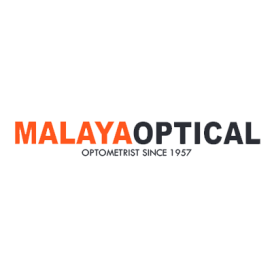Do you or someone you know suffer from myopia, more commonly known as nearsightedness? If so, you’re not alone. Myopia is a prevalent vision condition that affects millions of people worldwide. While it’s traditionally managed with prescription glasses or contact lenses, there’s a revolutionary solution on the horizon – myopia control lenses. In this blog, we’ll explore the exciting world of myopia control lenses and how they’re changing the way we approach nearsightedness.
Myopia, or nearsightedness, occurs when distant objects appear blurry while close-up objects are clear. It’s typically caused by the elongation of the eyeball, which results in the focal point falling short of the retina. Over time, myopia can worsen, leading to a greater reliance on corrective lenses and increasing the risk of eye-related complications, such as retinal detachment and glaucoma.
Traditional treatments for myopia include prescription glasses and contact lenses, which provide clear vision but do not address the underlying issue. Myopia control lenses, on the other hand, are designed to slow down the progression of myopia, especially in children. Here’s how they work and the benefits they offer:
- Peripheral Defocus: Myopia control lenses are engineered to create peripheral defocus, which means that the peripheral (outer) part of the lens focuses light in front of the retina. This encourages the eye to grow more slowly, reducing the progression of myopia.
- Reduced Eye Strain: Myopia control lenses help in reducing eye strain, as the eyes do not need to accommodate excessively for close-up tasks. This can be particularly advantageous for individuals, especially children, who spend a significant amount of time on near tasks like reading and screen use.
- Slower Myopia Progression: Studies have shown that myopia control lenses can significantly slow down the progression of myopia, leading to potentially better long-term vision outcomes. This is especially important for children, as myopia tends to progress more rapidly during their formative years.
- Less Dependence on Stronger Prescriptions: By slowing the progression of myopia, individuals using myopia control lenses may require lower prescription changes over time. This means less frequent visits to the eye doctor and reduced expenses on new eyewear.
- Reduced Risk of Eye Complications: Slowing myopia progression with myopia control lenses can potentially reduce the long-term risk of serious eye conditions associated with high myopia, such as retinal detachment and glaucoma.
It’s important to note that myopia control lenses are not a one-size-fits-all solution, and their effectiveness may vary from person to person. An eye care professional can assess the suitability of myopia control lenses for an individual based on their age, myopia progression rate, and lifestyle factors.
In addition to myopia control lenses, there are other strategies to help manage myopia in children, such as spending more time outdoors, reducing screen time, and taking regular breaks from near work. Combining these strategies with myopia control lenses can offer the best results in slowing the progression of nearsightedness.
In conclusion, myopia control lenses are a groundbreaking solution for managing myopia, especially in children. By addressing the root cause of myopia and slowing its progression, these lenses provide not only clear vision but also the potential for a brighter, healthier future for your eyes. If you or a loved one is struggling with myopia, consult with an eye care professional to explore the possibilities of myopia control lenses and enjoy the benefits of clearer, healthier vision.

